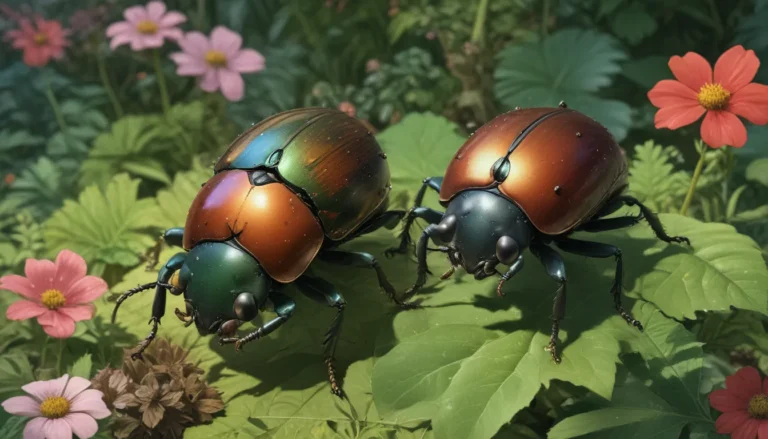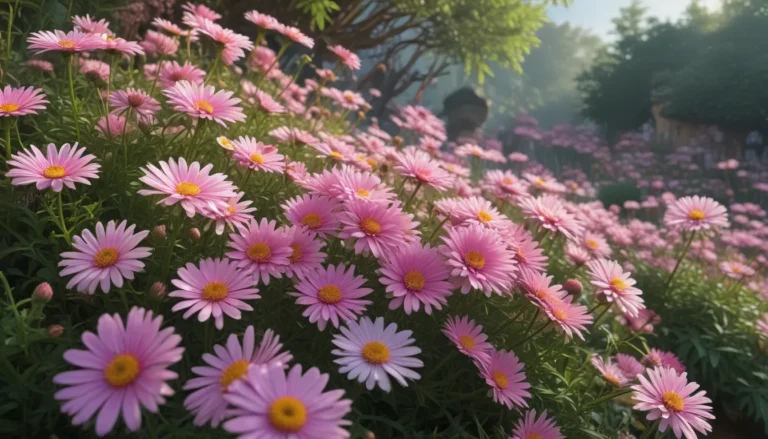The In-Depth Guide to Growing and Caring for French Marigolds

French marigolds are more than just common little flowers. These fantastic flowers are popular in gardens across the country because of their bold colors and easy growth. In fact, they are so versatile that they can be used for cut flowers, yarn dye, nematode control, and even as a salad topping. But did you know that they have a lot more to offer than just their bright colors?
French marigolds, scientifically known as Tagetes patula, are part of the same family as sunflowers and asters, Asteraceae. These delightful flowers have dentate, oblong leaves that are dark green and almost lacy in appearance. They are mounding plants that grow up to 12 inches tall and 18 inches wide, with wide, mounding growth habits that set them apart from other marigold species. French marigolds come in a range of colors including red, orange, yellow, and various combinations of these colors.
One unique feature of French marigolds is their heavily ruffled petals, which make them stand out from other marigold species with smoother petals. The flowers typically measure one to two inches across and bloom from late spring through the fall until the arrival of the first frost. Additionally, French marigolds are not just visually appealing – they are also edible. The petals have a spicy, herbal flavor with a hint of orange peel and mint.
Besides their ornamental and culinary uses, French marigolds have a variety of other benefits. The essential oil from these plants is effective at preventing mosquito larvae from maturing into blood-sucking adults. Additionally, the methanol extract from French marigolds can treat plant diseases caused by various pathogens. These plants also have an allelopathic effect that can help suppress weed growth.
Cultivation and History
Marigolds have a rich history dating back to the Aztec people who used them medicinally, in food, and in ceremonies. Spanish explorers brought the flowers to Europe in the 1500s, where they gained popularity in France, earning them the name “French” marigolds. Today, marigolds are still an important part of various cultures, including Mexican and Indian traditions.
French marigolds have been introduced and cultivated worldwide, with numerous cultivars available for gardeners to choose from. Some popular cultivars include ‘Court Jester,’ ‘Nema-Gone,’ ‘Strawberry Blonde,’ ‘Tiger Eyes,’ and ‘Triple Threat.’ These cultivars offer a range of colors and features to suit different preferences and garden needs.
Propagation
French marigolds can be easily propagated from seeds or seedlings. To grow them from seeds, collect dried seed heads and release the seeds onto the soil. Plant the seeds indoors about two months before the last expected frost date or outdoors after the last frost date. For transplanting seedlings, space the plants about eight inches apart in well-amended soil.
How to Grow French Marigolds
French marigolds thrive in full sun and well-draining soil. While they are drought-tolerant, they benefit from regular watering, especially when young. Deadheading spent flowers promotes continuous blooming, and pruning at the end of the season helps control pests and diseases. French marigolds are relatively low-maintenance plants that can survive multiple frosts, providing color late into the fall.
Growing Tips:
- Plant in full sun
- Keep young plants well-watered
- Amend clay or sand with well-rotted compost
Maintenance
Regular deadheading helps promote continuous blooming, and seed heads can be collected for future propagation or dye-making. Towards the end of the season, consider allowing some flowers to go to seed to replenish your garden with new plants. Additionally, chopping up the plants at the end of the season can help kill nematodes in the soil.
Managing Pests and Disease
French marigolds have few pest problems, with deer, mice, and some insects avoiding them due to their strong scent. However, slugs and spider mites can occasionally be an issue. Powdery mildew is the most common disease that French marigolds may face, but it can be managed by controlling moisture levels and providing proper care.
French marigolds are best used in containers, raised beds, borders, or as companion plants in vegetable gardens to help deter pests. They also attract beneficial insects like bees and butterflies, making them a valuable addition to any garden.
In conclusion, French marigolds are versatile, easy-to-grow plants that offer a range of benefits beyond their vibrant colors. Whether you’re a seasoned gardener or a beginner, these delightful flowers are sure to add beauty and functionality to your outdoor space. So, the next time you’re planning your garden, consider adding some French marigolds to experience their charm firsthand.





